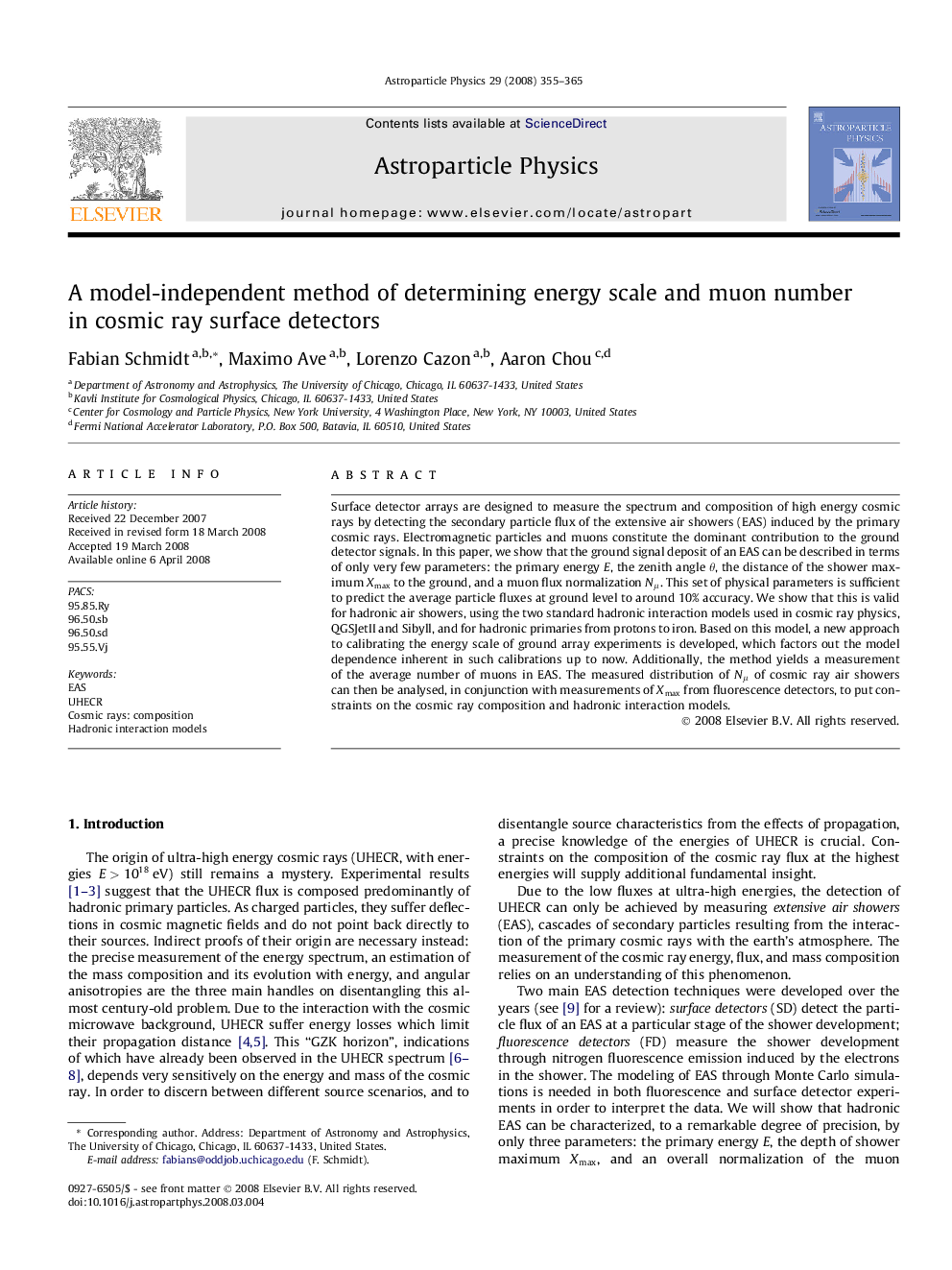| Article ID | Journal | Published Year | Pages | File Type |
|---|---|---|---|---|
| 1771311 | Astroparticle Physics | 2008 | 11 Pages |
Surface detector arrays are designed to measure the spectrum and composition of high energy cosmic rays by detecting the secondary particle flux of the extensive air showers (EAS) induced by the primary cosmic rays. Electromagnetic particles and muons constitute the dominant contribution to the ground detector signals. In this paper, we show that the ground signal deposit of an EAS can be described in terms of only very few parameters: the primary energy E , the zenith angle θθ, the distance of the shower maximum XmaxXmax to the ground, and a muon flux normalization NμNμ. This set of physical parameters is sufficient to predict the average particle fluxes at ground level to around 10% accuracy. We show that this is valid for hadronic air showers, using the two standard hadronic interaction models used in cosmic ray physics, QGSJetII and Sibyll, and for hadronic primaries from protons to iron. Based on this model, a new approach to calibrating the energy scale of ground array experiments is developed, which factors out the model dependence inherent in such calibrations up to now. Additionally, the method yields a measurement of the average number of muons in EAS. The measured distribution of NμNμ of cosmic ray air showers can then be analysed, in conjunction with measurements of XmaxXmax from fluorescence detectors, to put constraints on the cosmic ray composition and hadronic interaction models.
